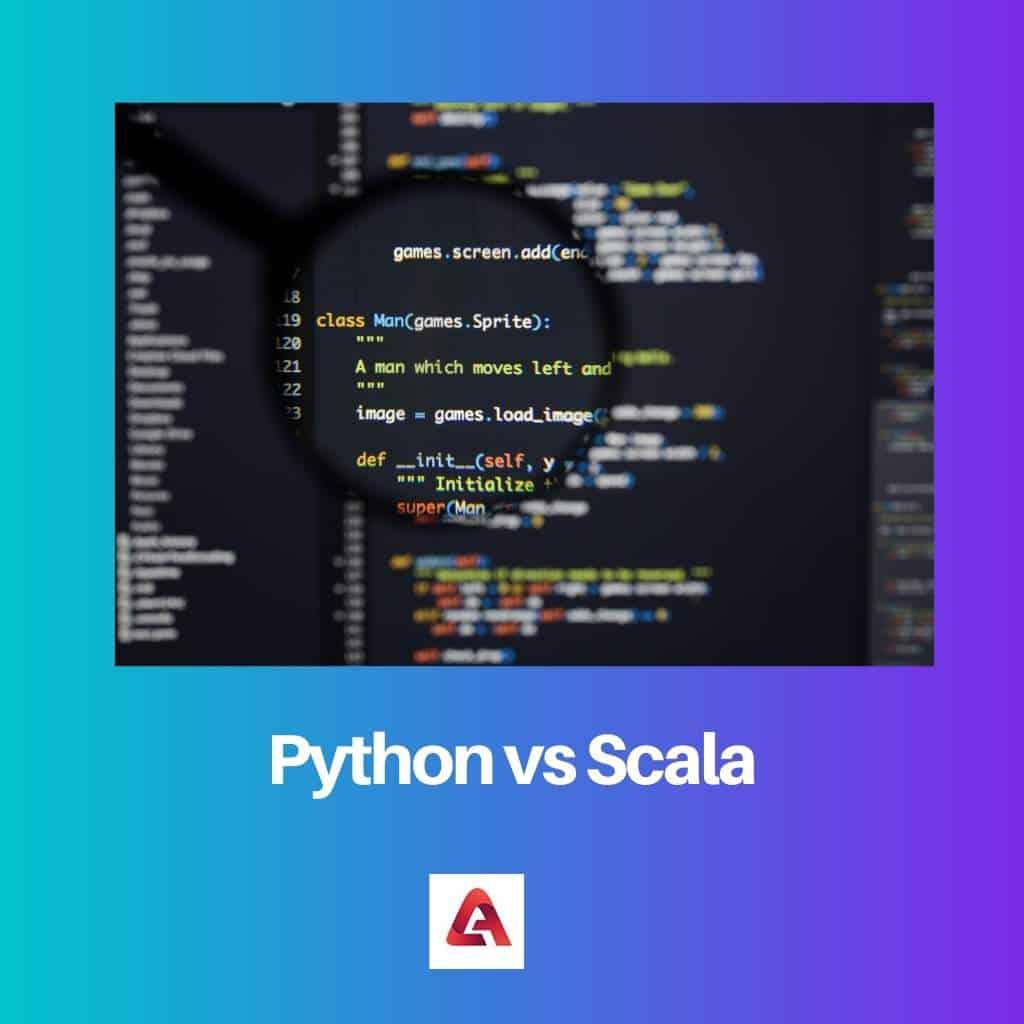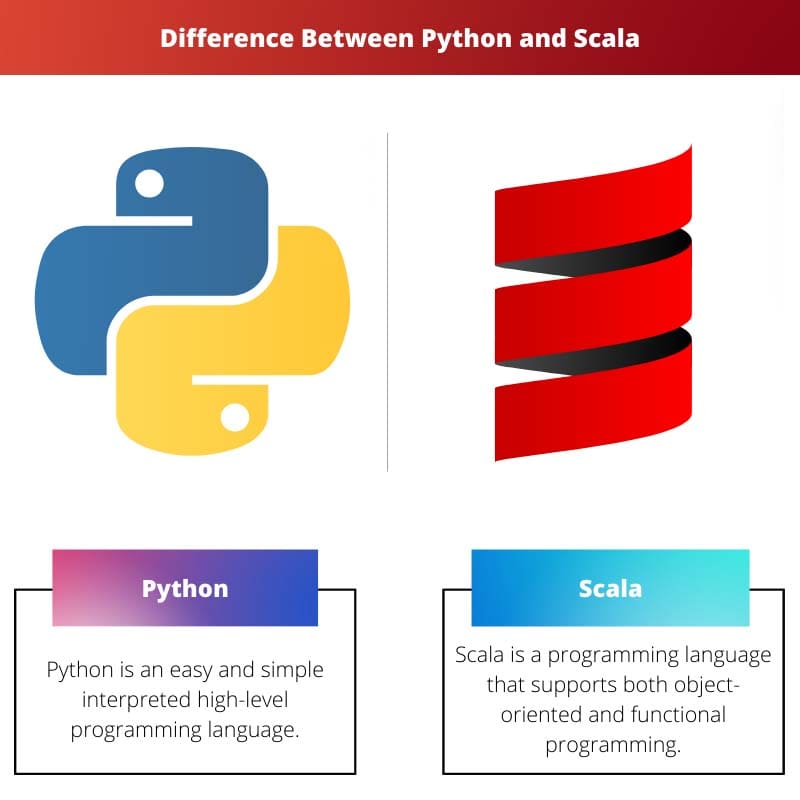As technology is being developed at a fast speed.
Many programming languages are being used for development; separate languages are used for different things, and some of them are used for developing websites, applications, software, building systems, etc.
These languages play an important role in making these things more stable and secure for the user.
Python and Scala are both programming languages used for different purposes. They are similar in some ways, which leads to confusion between both of them.
It is important to understand them as it is important to know the information about languages before learning and starting coding.
Key Takeaways
- Python is a high-level programming language, while Scala is a hybrid functional programming language.
- Python is easy to learn and has a simple syntax, while Scala has a steeper learning curve and a complex syntax.
- Python is more popular for data science and machine learning, while Scala is more popular for big data processing.
Python vs Scala
Python is a popular, simple and dynamic programming language used for building software and websites, task automation and data analysis. Scale is a static programming language that supports object-oriented and functional programming. It is best used for data analysis.

Python is an easy and simple interpreted high-level programming language. It encourages program modularity and reuse of code by supporting modules and packages; it does not need specific variables and objects.
It is easier to code. It is mainly used for the development of software, data analysis, websites, etc. It is also used by non-programmers. It has a huge community, and data types are decided during the runtime.
Scala is a programming language that supports both object-oriented and functional programming. It does not have any concept of primitive data.
Objects and variables need to be specified in these languages. It is comparatively difficult to learn and less easy to code. Not only this, it is a fast programming language.
Comparison Table
| Parameters of Comparison | Python | Scala |
|---|---|---|
| Specifying variables and objects | Not needed | Needed |
| Learning | Easier to learn | Difficult to learn |
| Speed | Slow | Fast |
| Deciding data type | During run time | Not decided during run time |
| Size of community | Huge community | Comparatively Lesser |
What is Python?
Following are some of the advantages of the Python language:
- It has extensive support language.
- It is easier to read, write and learn.
- It is a high-level language.
- It is an object-oriented language.
- It is a portable and interactive programming language.
- It is highly efficient.
- It provides less coding along with more functionality.
Applications of this language are:
- Web frameworks.
- It is used for developing applications.
- It is used for GUI-based apps.
- It is used for educational purposes.
- It is used for software development.
- It is used for prototyping.
- It is used for operating systems.
- It is used for business applications.
It was founded in 1991 and is among the most popular and fastest languages. It is a flexible and powerful language. It focuses on code readability, supporting multiple programming paradigms. Some of the organizations that use this language are:
- Google(Components of Search Engine)
- Yahoo(Maps)
- YouTube
- Mozilla
- Dropbox
- Microsoft
- Cisco
- Spotify
- Quora

What is Scala?
It is a short form of Scalable language, and it has the following benefits:
- It has an exact syntax; programs written in it require fewer codes.
- The combination of object-oriented and functional language is best for web development.
- It can be used for executing Java code.
- It is easier for a programmer who has learned the Java language.
- It is highly scalable.
- It is best for data analytics.
The following are disadvantages of this language:
- Limited community presence as compared to other languages.
- Offers less backward compatibility.
- Some of the features are not familiar to programmers.
- There are many tools absent in this language, and some of them are not advanced.
This language is similar to Java in the following ways:
- Both of the languages are object-oriented.
- They run on JVM.
- Both of them are multi-paradigm and imperative.
- Both of them are statically typed.

Main Differences Between Python and Scala
- In terms of the size of the community, both languages differ. Python is comparatively huge as it is used for the development of more things, while Scala indeed has a good community, but when compared to Python, it is lesser.
- Both of them support different things, Python does not support proper multithreading, but it does support heavyweight process forking, whereas Scala is best for implementing concurrency due to asynchronous libraries.
- Testing Python is relatively difficult as it is a dynamic programming language, while Scala is much better when it comes to testing, being a statically typed language.
- Writing code is a difficult process; Python is comparatively easier for writing code, whereas it is difficult to write code in Scala language.
- Python has several operating system calls and libraries along with many interpreters, and Scala is a compiled language and compilation of all source codes before execution is done.
- When changes are made in existing code, there are chances of bugs arriving during the process. In the case of Scala, no such bugs take place during changes in existing code, while bugs can take place while changing in Python language.
- Python has more additional tools, such as proper data science tools, libraries for Machine learning, and Natural Language Processing, whereas Scala has a disadvantage as it does not have any of these tools.
- Both of them are used for different sizes of projects. For small-scale projects, the most suitable language is Python, while for large-scale projects, the most suitable language is Scala.
- Some languages provide scalable features, while some do not. Python is a language that does not support this feature, whereas Scala has the advantage here as it supports the scalable feature.






